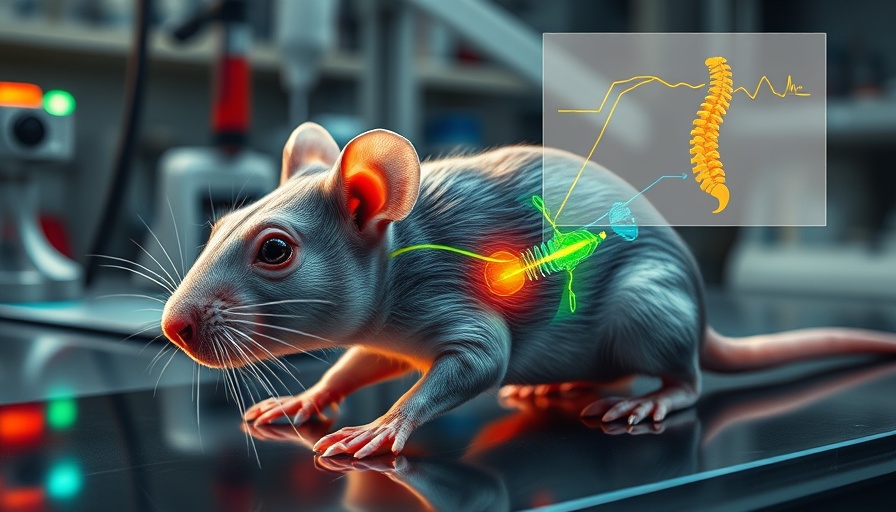
The Groundbreaking Role of Electric Currents in Spinal Cord Healing
In an astonishing breakthrough, researchers have made significant strides in restoring movement in paralyzed rats suffering from spinal cord injuries using a bioelectric implant. Developed by experts at Chalmers University of Technology and the University of Auckland, this groundbreaking technology harnesses the power of electric currents to stimulate nerve regeneration and restore function—an exciting step forward for those impacted by such debilitating injuries.
Importance of Spinal Cord Health
Spinal cord injuries affect roughly 15 million individuals globally, according to the World Health Organization. Injuries prevent nerve fibers from transmitting signals between the brain and the body, leading to paralysis and significant loss of sensation. Unlike other bodily injuries, the spinal cord does not effectively regenerate, making advancements in treatment paramount.
How the Implant Works: Electricity's Role in Healing
Central to this innovation is an ultra-thin implant that sits directly atop the spinal cord. This device delivers controlled electric currents where they are needed most. According to lead researcher Bruce Harland, these preset electric fields mirror the natural guidance mechanisms present in early nervous system development, promoting nerve fiber growth across the injury site.
Electric Stimulation and Recovery
The results from the study are promising—rats receiving electrical stimulation showed improved movement and sensation. This electric stimulation not only encourages nerve reconnection but also holds the potential to be transformed into a viable medical device for humans in the future, according to Professor Maria Asplund.
Potential Implications for Patients and Healthcare Providers
For concierge health practitioners, this technology signals a paradigm shift in treating spinal cord injuries. As advancements like this come to market, physicians must stay informed about how they can incorporate new treatment options into their practices. The knowledge of these innovative approaches will empower practitioners to offer more effective solutions for patients facing such life-changing injuries.
The Path Forward: Challenges and Opportunities
Despite the promising results, many challenges remain for translating this technology from animal trials to human treatments. Researchers must navigate regulatory hurdles and further refine the device for human anatomy. However, the potential of transforming lives through enhanced mobility and function makes it an endeavor worth pursuing.
Inspirational Perspectives: The Human Connection
Behind every statistic of spinal cord injury is a personal story. The emotional impacts of paralysis underscore the importance of innovations like the bioelectric implant. Patients and families hope for breakthroughs that can dramatically change the quality of life. This research shines a light on the compelling journey from the laboratory to the bedside.
Encouraging Action on This Breakthrough
As advancements in technology open new doors, it’s crucial for healthcare practitioners to champion these developments. Staying abreast of such groundbreaking research allows medical professionals to provide the latest evidence-based treatment options for their patients. Engage in discussions with colleagues and consider exploring partnerships with research institutions to promote new therapies.
 Add Row
Add Row  Add
Add 




Write A Comment